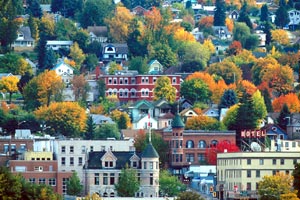Ukraine
Find Eduxpress Programmes
Higher education in Ukraine has a centuries-old history, national traditions and high prestige in the world. Higher education in Ukraine provides developed training, scientific and social infrastructure and is ready to give equal opportunities to international students. Study courses are offered at different levels of education. A wide range of proficiency improvement courses and advanced courses are available.
The system of higher education in Ukraine has a flexible structure, corresponds to modern trends and tendencies to those in advanced countries recognized by UNESCO, UN Organization and many other international organizations. In order to stimulate the application of general European educational standards, cooperation has gained depth with the Council of Europe, UNESCO, and other international organizations that work under the TEMPUS program.
Over one thousand occupational schools offer over 800 professional specializations. Students may choose among 313 (220 state and 93 private) universities, academies, and institutes as well as 658 (589 state and 69 private) educational institutions with first or second degree of accreditation. 500 educational institutions can offer supplementary education and the improvement of qualifications.
Ukraine is a country in Eastern Europe. Ukraine borders the Russian Federation to the east and northeast, Belarus to the northwest, Poland, Slovakia and Hungary to the west, Romania and Moldova to the southwest, and the Black Sea and Sea of Azov to the south and southeast. It has an area of 603,628 km², making it the second largest European country after Russia.
In terms of population (47 million as of January 1, 2006), Ukraine ranks fifth in Europe The population density per one square kilometre amounts to an average of 85.6 people, the European average being 67.
The largest mountain system is the Ukrainian Carpathian Mountains, which are part of the Eastern Carpathians. The mountains stretch to the west within the territories of the Transcarpathian, Lviv, Ivano-Frankivsk and Chernivtsi regions.
The medieval state of Kievan Rus was established in the 9th century as the first historically recorded East Slavic state. It emerged as a powerful nation in the Middle Ages but disintegrated in the 12th century. By the middle of the 14th century, Ukrainian territories were under the rule of three external powers—the Golden Horde, the Grand Duchy of Lithuania, and the Kingdom of Poland. By the 19th century, the largest part of Ukraine was integrated into the Russian Empire, with the rest under Austro-Hungarian control.
A period of incessant warfare ensued, with establishment of internationally recognized independent Ukrainian People's Republic in 1917. Then Soviet intervention followed, which resulted in Soviet rule for more than 70 years. In 1945, the Ukrainian SSR became one of the founding members of the United Nations. Ukraine became independent again when the Soviet Union dissolved in 1991.
In its ethnic composition, Ukraine is a multi-ethnic Republic, inhabited by more than 110 ethnic groups, of which Ukrainian (72.7%) are the largest, followed by Russians, Jews, Belarussians, Moldovans, Bulgarians, Poles and Hungarians.
The country remains a globally important market and, as of 2012, is the world's sixth-largest grain exporter. Ukraine has a well-developed manufacturing sector, especially in the aerospace and industrial equipment field.
The considerable remoteness from oceans and continental Siberia tells favourably on the climate of Ukraine. Almost al of its territory is located in the temperate zone. Overall, the climate is temperately continental, and only on the southern shore of Crimea is it subtropical.



